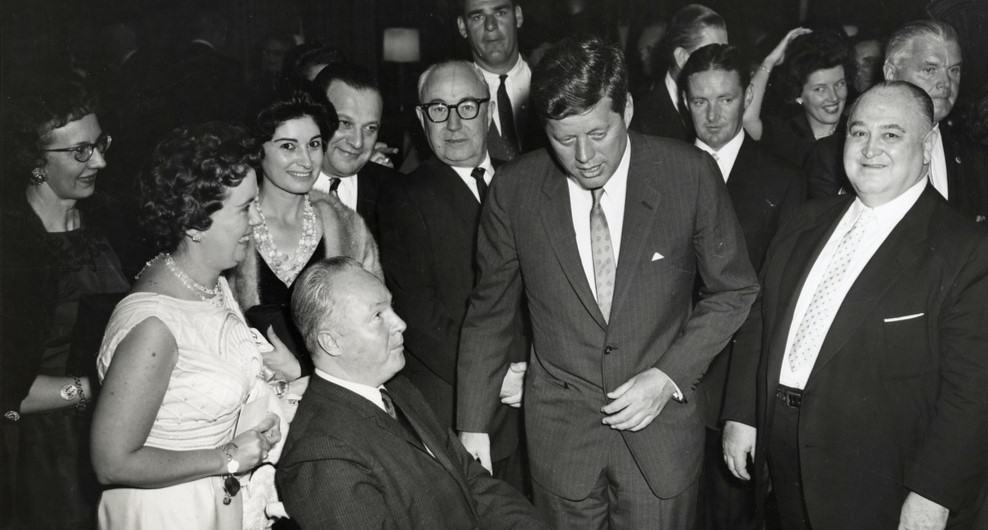The 1960s menâs fashion era stands as a remarkable period of transition and innovation, setting the stage for the diverse and expressive styles that define modern menswear to this day.
This decade was marked by a dynamic shift from the conservative, tailored looks of the 1940s and early 1950s to more widespread and mainstream eclectic, bold expressions. Not to mention huge history-changing moments, like the US landing on the moon, the beginning and superstar rise of Muhammad Ali, the British Invasion (the popularization of UK music like The Beatles and Rolling Stones), the JFK assassination, the civil rights movement, and Dr. Martin Luther King â truly, the list goes on. All of these events changed the history of Western civilization and, in some cases, the world, which left its heavy mark on â60s menâs fashion.
As we delve into the world of 60s menâs fashion, we uncover a rich tapestry of styles that mirror the social and cultural revolutions of the time. From the sharp silhouettes of Mod suits to the casual ease of bell-bottom jeans and turtlenecks, 1960s fashion offered an unprecedented exploration of personal style and freedom of expression.
Keep reading to discover the essential elements of 1960s menswear, highlighting key trends, influential figures, and the lasting impact of the decadeâs fashion innovations on todayâs style landscape.
Key Takeaways
The 1960s marked a pivotal decade in menâs fashion, characterized by an unprecedented break from traditional styles to more diverse and expressive forms of dress. This era witnessed the wider emergence of youth-driven subcultures, the hippie movement, the space movement, influences from Eastern cultures, and the growing casual movement â all with their distinct styles, influencing mainstream fashion in profound ways. The most important shift was the movement away from an understood âuniform.â Men and women alike were starting to dress with individualism and creativity as their top priorities.
From the sharp, tailored suits of the early â60s to the psychedelic patterns and casual wear that defined the late â60s, menâs fashion experienced a revolution. The decade also saw the rise of influential designers who challenged and reshaped the conventions of menâs attire, making the 1960s a foundational period for modern menswear.

1960s Menâs Fashion: A Brief Background
The 1960s marked an era-long change in menâs fashion, reflecting the decadeâs dynamic social and cultural shifts. Early in the decade, menâs style was characterized by the continuation of the 1950sâ sharp eleganceâthink slim-cut suits, skinny ties, tighter-fitting pants, and the polished âMad Menâ aesthetic. This period underscored a conservative yet refined approach to menswear, with bespoke tailoring at its core.
As the decade progressed, the emergence of the British Invasion and the Mod movement signaled a shift towards more youthful and unconventional styles. These influences introduced tighter fits, brighter colors, and novel patterns, distancing menâs fashion from its conservative roots.
The late â60s diverged further from traditionalism, propelled by counterculture movements and a burgeoning cross-ocean music scene. Psychedelic prints, turtlenecks, bell bottoms, and an increased use of denim underscored a growing preference for casual and expressive clothing. This era not only challenged the status quo but also laid the groundwork for the diversity and experimentation that would define future menswear, emphasizing individuality and freedom of expression through fashion.
Our Favorite 1960s Menâs Fashion Staples
Menâs Fashion in the 1960s: Style Essentials

Suits
Early â60s menâs fashion favored a continuation of the 1950sâ tailored, straight-cut suits, epitomized by the sleek, structured silhouettes with rounded jacket corners and three button closures. These suits were characterized by narrow-er lapels, a slim waist, and a subtle taper through the legs, promoting a sharp and polished image. Fabrics were typically conservativeâwools, worsteds, and flannels in shades of gray, blue, and black dominated the palette.
As the 60s wore on, the influence of the British Mod culture became increasingly apparent in suit designs. This era introduced more adventurous styles, including the iconic Mod suit, which featured even slimmer lapels, a tighter fit, and often came in brighter colors or bold patterns.
By the late â60s, the suit had begun to loosen up, both figuratively and literally. The counterculture movement, with its emphasis on individuality and anti-conformity, led to a diversification of suit styles from a resurgence in thrifting and second-hand stores. This meant a lot of the 1930s menâs fashion and early 40s (even the Edwardian eras) were being incorporated into menâs wardrobes in new ways.
As young men grew increasingly tired of the traditional âmenâs uniform,â the peacock revolution began taking hold. This meant that wilder styles and often more feminine features like lace and frills were experimented with â all in the name of individualism. Materials like velvet and silk became more common, and suits were often worn in less formal ways, paired with turtlenecks or even open-collared shirts for a blend of sophistication and casual flair.
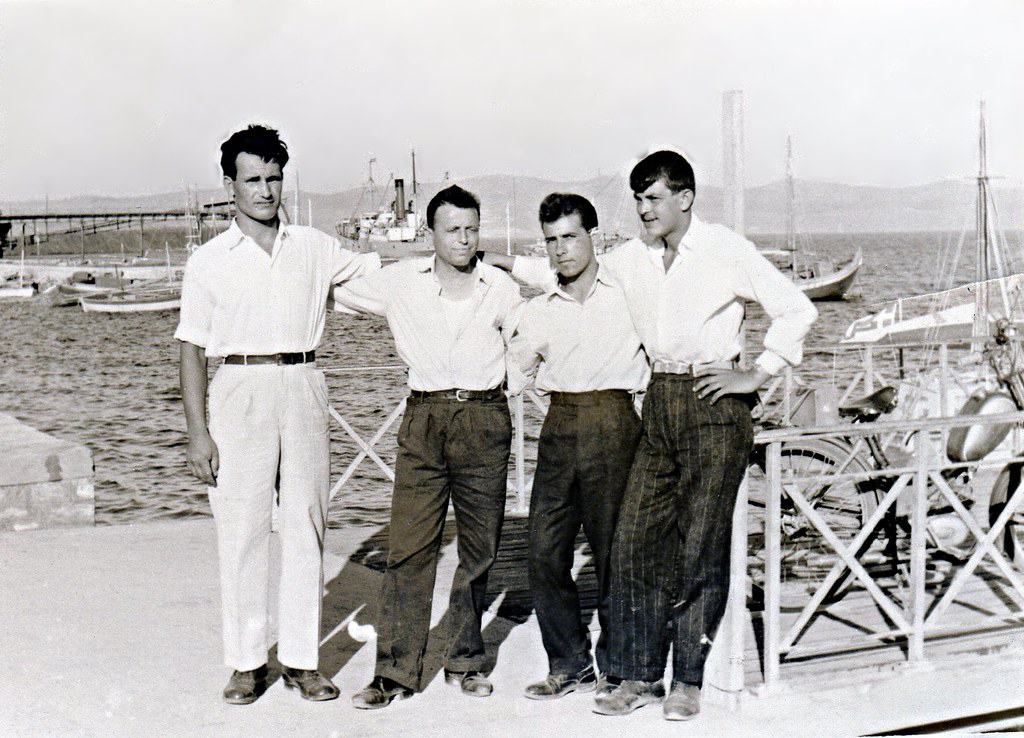
Shirts
The 1960s saw a significant evolution in menâs shirt styles, moving from the traditional dress shirts of the early years to truly wild and expressive forms.
Initially, the decade continued the preference for crisp, well-fitted dress shirts, often featuring conservative colors like white, light blue, and pale pink. These shirts were typically worn with slim ties, complementing the tailored suits of the period. The early â60s shirts emphasized a clean and professional look, with pointed collars and single-button cuffs being standard.
Mid-decade changes introduced a new wave of shirt designs. High-fashion shirts with bold patterns, contrasting collars, and French cuffs became popular among the younger, fashion-forward crowd. The Mod influence was evident in the popularity of button-down collars, polka dots, geometric, psychedelic, and stripes, offering a fresh take on the traditional shirt.
Denim shirts and turtlenecks also became staples in a manâs casual wardrobe, marking a departure from the more formal styles that had dominated earlier in the decade. These changes underscored a shift towards more casual and expressive fashion, mirroring the broader societal move towards individualism and personal freedom.

Pants
Menâs pants in the 1950s started with a continued preference for tailored, slim-fitting trousers, which complemented the sleek lines of early â60s suits. These trousers were typically high-waisted, made from wool or wool blends, and featured a slight taper towards the hem, creating a polished and refined silhouette.
With Mod culture came a sharper, more youthful look to menâs pants. Slimmer cuts became even more pronounced, and the introduction of lower-rise trousers offered a modern twist to the classic silhouette. Colors and patterns became bolder, with checks, stripes, and even houndstooth patterns adding variety to menâs wardrobes. The Mod scene also popularized the use of brighter and more unconventional colors, breaking away from the traditional neutrals.
The late â60s brought about a significant shift towards casual and expressive styles, significantly influenced by the counterculture movement. Bell bottoms and flared trousers emerged as symbols of the era, often crafted from denim, corduroy, or other durable materials. These pants, characterized by their dramatic flare from the knee down, became synonymous with the freedom and rebellion of the period.
Additionally, the introduction of casual slacks and chinos, popularized from the âpreppy movement and 1920s menâs fashion from the UK, also provided men with more relaxed alternatives for everyday wear, moving away from the strict formalities of earlier years.

Sweaters & Knitwear
Early in the 1960s, menâs sweaters were typically conservative, often worn over dress shirts and ties for a layered look that added both warmth and a touch of sophistication. V-neck and crew neck styles in fine wool or cashmere were popular, available in a range of muted colors like navy, grey, and burgundy. These classic pieces were essential for the well-dressed man, complementing the tailored suits and crisp shirts of the time.
Youth culture and the Mod movement introduced more vibrant colors, bold patterns, and new textures to menâs knitwear. The mid-1960s saw the rise of the turtleneck sweater as a stylish alternative to traditional collared shirts, embodying a blend of sophistication and modernity. This period also welcomed the introduction of geometric patterns and stripes in knitwear, offering a playful departure from earlier, more subdued styles.
Cable knit sweaters, cardigans, and chunky roll-necks became staples, often featured in rich, earthy tones or bright, psychedelic colors. These pieces were not only comfortable but also versatile, easily paired with the eraâs flared trousers and denim for a relaxed yet fashionable look.
Also, the advances in synthetic fibers allowed for new textures and forms in knitwear, expanding the possibilities for innovative designs.
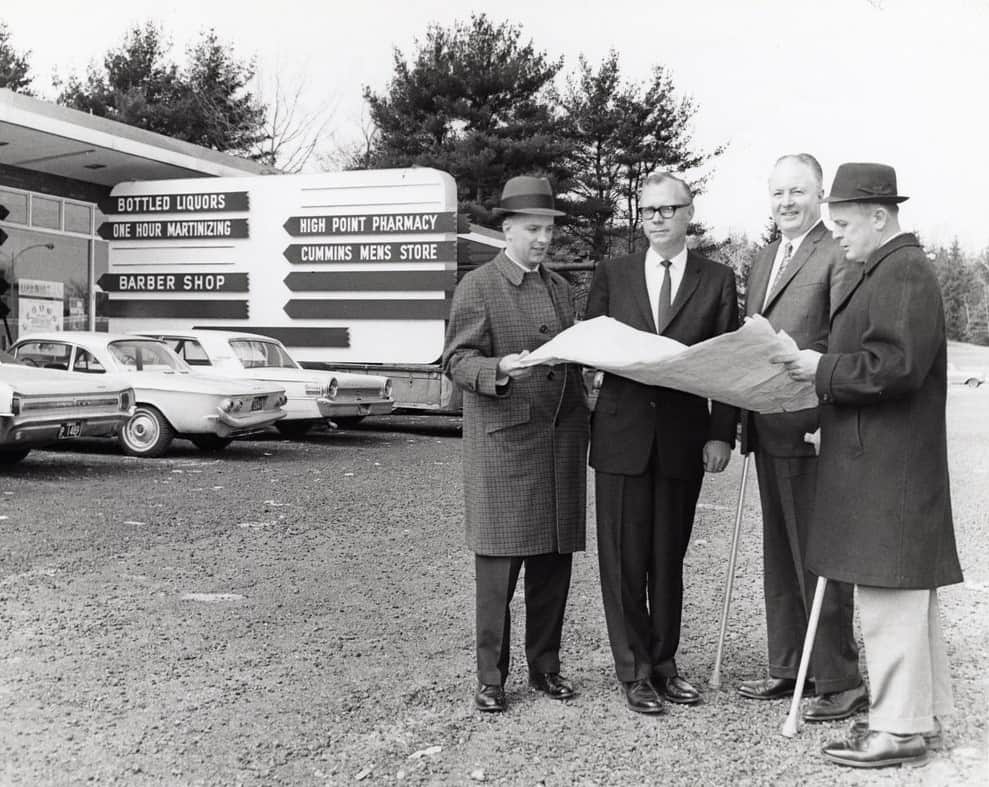
Jackets & Outerwear
Menâs jackets in the early 1960s remained relatively conservative, with classic styles such as the single-breasted overcoat, the trench coat, and the Harrington jacket reigning supreme. These pieces were designed for functionality and versatility, often crafted in neutral colors to complement the traditional suits and formal wear of the time.
Then came the iconic parka, a staple of Mod fashion, offering both warmth and a distinctive style when riding on scooters. Leather jackets, inspired by the rock and roll culture, also continued in popularity, adding an edge to the more polished Mod looks. Additionally, the bomber jacket transitioned from military wear to mainstream fashion, favored for its casual style and practicality.
The late â60s saw an explosion of variety in menâs outerwear, reflecting the eraâs broader trend towards casualization and self-expression. The peacoat or other military coats became a fashionable choice for its classic look and warmth, while suede and fringe jackets embraced the bohemian and psychedelic influences of the time.
Bright colors, bold patterns, and unconventional materials like velvet and synthetic fabrics began to appear, challenging traditional notions of menswear.
This period also witnessed the rise of the safari jacket, an item that combined functionality with a sense of adventure, often featuring multiple pockets and a belt. Inspired by military and outdoor garments, the safari jacket embodied the decadeâs growing interest in leisure and travel, further diversifying menâs outerwear options.

Footwear
At the beginning of the 1960s, men continued favoring classic footwear designs such as Oxford shoes, loafers, and brogues. These shoes, often crafted in leather and polished to a high shine, complemented the tailored suits and formal attire that dominated early â60s menswear.
However, Chelsea boots made a break on the scene in the mid-1960s, with their sleek design and elastic sides. They quickly became synonymous with the Mod style, offering a modern alternative to more conventional footwear choices. The Cuban heel, slightly higher than traditional heels, added an element of flair and was often seen on boots and shoes alike, reflecting the eraâs shifting fashion sensibilities.
By the mid to late â60s, the counterculture movement introduced a more casual and eclectic approach to footwear. The desert boot gained popularity for its comfort and versatility, easily transitioning from formal to casual wear. Additionally, the rise of the hippie movement brought sandals and other open footwear into mainstream menâs fashion for the first time, emphasizing a connection with nature and a more relaxed lifestyle.

Menâs Formalwear in the 1960s
Menâs formalwear in the 1960s â at least in the early part of the decade â adhered closely to the conventions established in the 1950s, with a focus on sleek, well-tailored suits, crisp dress shirts, and conservative accessories. The silhouette was slim, emphasizing clean lines and a polished appearance. Black tie events still demanded the classic tuxedo, complete with a bow tie, cummerbund or waistcoat, and patent leather shoes, underscoring the eraâs initial commitment to traditional formal attire.
However, as the decade progressed, the influence of youth culture and the emerging counterculture began to make their mark on formalwear. The mid-1960s witnessed a slight relaxation in the strict rules of formal dressing. Dinner jackets in velvet, bold patterns, and even bright colors became acceptable at less conservative events, reflecting a growing interest in personal expression through fashion.
By the late â60s, the formalwear scene was increasingly diverse, with a clear movement towards individuality and away from uniformity. The psychedelic and hippie movements introduced a range of new materials and colors to formal attire, including satin shirts, wide lapels, and even patterned suits. For the first time, formalwear began to embrace more casual elements, such as turtleneck sweaters in place of dress shirts or loafers instead of oxfords, blurring the lines between formal and casual dress.

Menâs Casualwear in the 1960s
Menâs casual fashion in the 1960s heralded a sea change, diverging significantly from the restrained and uniform styles that characterized the preceding decade. The â60s were when casual attire became a canvas for personal expression and the rejection of established norms.
At the dawn of the 1960s, menâs casual attire maintained a conservative bent, predominantly featuring polo shirts, chinos, and slacks made from lightweight wool or cotton. The preppy, Ivy League aesthetic held sway, defined by its button-down oxford shirts, neatly fitted crew neck sweaters, and polished loafers.
By the mid-60s casualwear became an avenue for bold self-expression, with the adoption of tighter polos, sleek mock turtlenecks, and, most significantly, the popularization of jeans from workwear to a fashion essential.
The palette of menâs leisurewear exploded with vibrant colors and striking patterns, while the advent of synthetic fabrics introduced innovative textures and silhouettes to the casual wardrobe.
Then in the latter part of the 1960s tie-dye tees, denim outerwear, and flared jeans became emblems of a generationâs quest for freedom and societal change. This fashion history was marked by a deliberate mix-and-match approach, combining disparate prints, materials, and influences to create outfits that were as unique as they were eclectic.

Menâs Accessories in the 1960s
Menâs accessories in the 1960s not only complemented the eraâs dynamic styles but also served as key elements of personal expression and identity.
Hats
Hats, once a staple of menâs fashion, declined in everyday use during the 1960s, reflecting the decadeâs move towards casualization, individual style, more elaborate hairstyles and rebellion against traditional norms.
However, certain styles remained popular and gained iconic status within subcultures. The fedora, though less prevalent than in previous decades, was still favored by some for its classic appeal.
Watches
Watches in the 1960s ranged from classic, elegant designs to more innovative and expressive styles. At the same time, the popularity of sports and diving watches grew, reflecting the eraâs interest in functionality and adventure. The introduction of digital watch technology in the early 1970s would mark a significant innovation, offering a glimpse into the future of wearable technology.
Ties
The 1960s witnessed a broadening of tie styles, moving away from the wider designs of the 1950s to include a variety of widths, colors, and patterns â and, as often seen, ties that matched or came with a collared shirt.
The early part of the decade favored very skinny, understated ties, aligning with the sleek, tailored suits of the time. However, as the decade marched on, ties became wider and more expressive, featuring bold prints, psychedelic patterns, and vibrant colors, mirroring the eraâs general trend towards more casual and individualistic fashion. However, as many started to wear their shirts unbuttoned, the neck scarf, cravat, or ascot also became very popular.
Suspenders and Belts
Suspenders saw a decline in everyday use as belts became the preferred method for securing trousers, reflecting the casualization of menâs fashion. Belts themselves varied from functional and understated to decorative pieces with elaborate buckles, often used to add a personal touch to an outfit.
The late â60s introduced more unconventional belt materials and designs, including woven and beaded styles, influenced by the eraâs interest in non-Western cultures and handmade goods.
More Popular Accessories for Men in the 1960s
Beyond the staples, the 1960s introduced a range of other accessories that became popular among men. Leather wristbands, peace sign necklaces, and other jewelry reflected the countercultureâs influence, while military surplus items like dog tags and canvas belts were adopted for their rugged appeal and anti-establishment connotations. Headwear, including bandanas and headbands, became popular in the late â60s, often worn as symbols of solidarity with the peace movement.
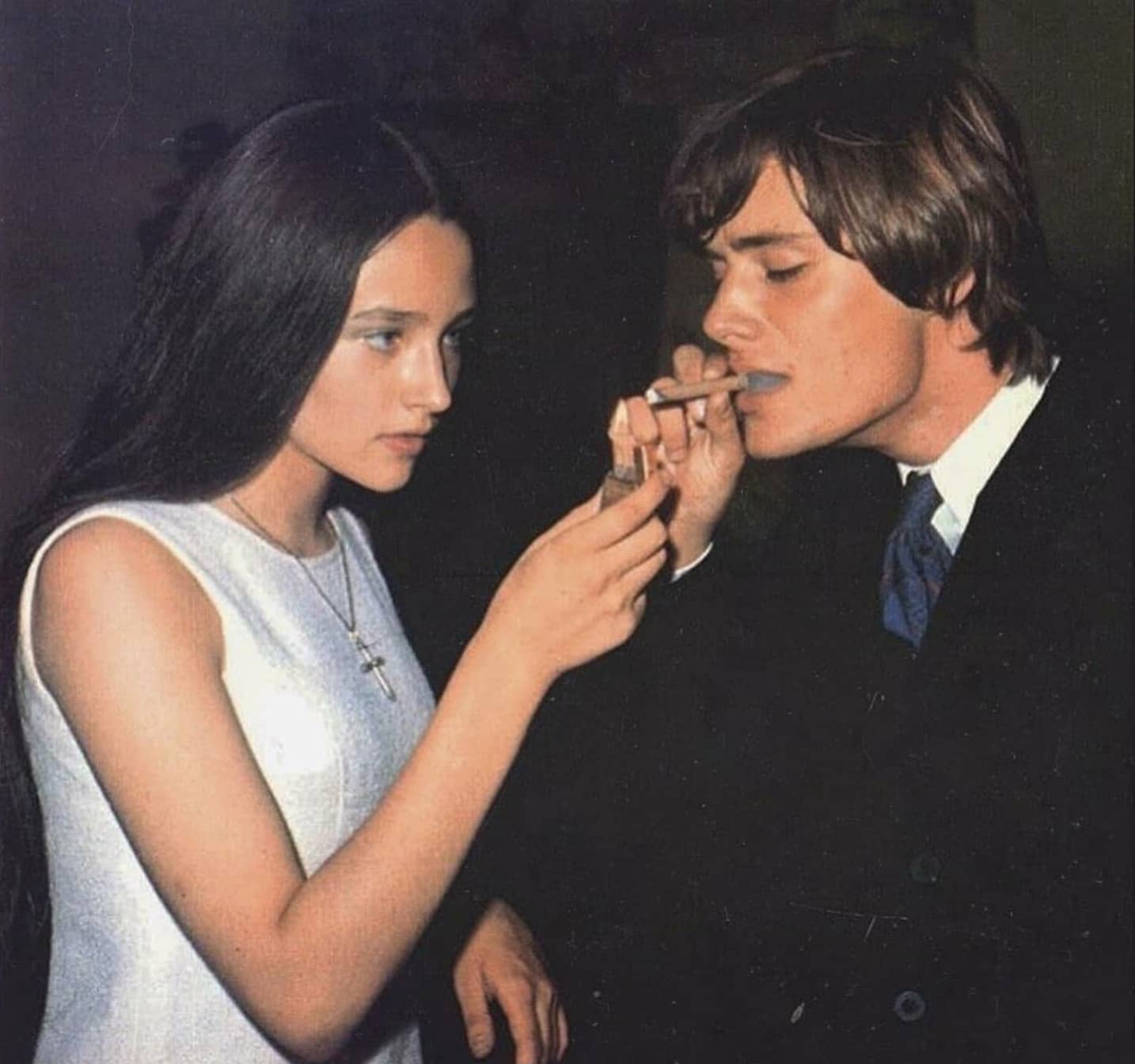
Menâs Grooming Trends in the 1960s
From the clean-cut appearance of the early 1960s to the more natural and expressive styles of the late 60s, grooming trends played a crucial role in the â60s fashion statements.
1960s Menâs Hairstyles
At the beginning of the 1960s, menâs hairstyles were largely conservative, characterized by short, well-groomed cuts that emphasized a neat and tidy appearance. The crew cut and the Ivy League cut were particularly popular, reflecting the decadeâs initial emphasis on conformity and traditionalism in grooming.
However, menâs hairstyles began to reflect a desire for individuality and a break from the past. The mid-1960s saw the rise of the Mod hairstyle, with longer lengths, rounder shapes, more volume, and the use of products to create a styled yet effortless look. This period also marked the popularity of the mop-top, made famous by The Beatles, which featured bangs and a more natural, tousled appearance.
By the late 1960s, menâs hairstyles had become significantly more varied and expressive. Long hair, once a rarity among men, became a symbol of rebellion and freedom, associated with the hippie movement and the broader counterculture.
Hairstyles like the Afro, popularized by the Black is Beautiful movement, and the wider presence of black culture in the mainstream, and other natural hairstyles celebrated cultural identity and challenged conventional European beauty standards. The end of the decade saw a much wider diversity in menâs hairstyles, with individuals embracing their natural hair texture and experimenting with lengths and styles previously considered unconventional.
1960s Facial Hair
Facial hair in the 1960s underwent a similar evolution, moving from the clean-shaven look of the early part of the decade to a more relaxed and varied approach by its end. Initially, the majority of men preferred a clean-shaven face or a neatly trimmed mustache, aligning with the eraâs conservative grooming standards.
As the decade moved forward, however, facial hair became a significant aspect of menâs fashion, with figures in music, film, and counterculture sporting mustaches, beards, and sideburns as expressions of individuality and non-conformity. The mid to late â60s saw a resurgence in the popularity of full beards, long mustaches, goatees, and especially long sideburns, reflecting the eraâs shifting attitudes toward masculinity and personal freedom.
By challenging traditional grooming standards, men of the â60s paved the way for future generations to explore personal identity and style with greater freedom and creativity.
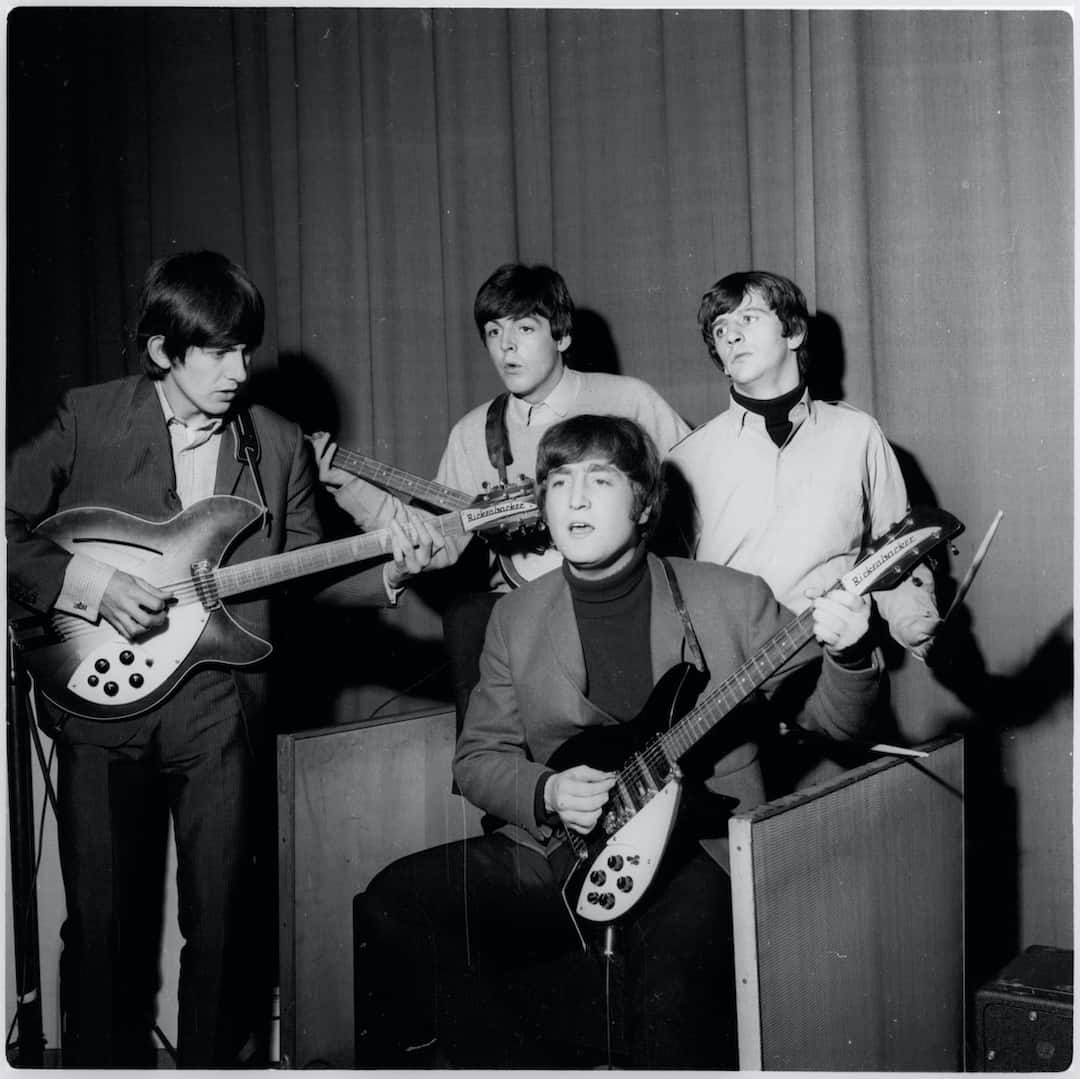
Big Names in 1960s Menâs Fashion
The 1960s fashion scene was as much about the individuals who shaped its trends as it was about the transformative styles themselves. This era witnessed the rise of several influential figures in fashion, music, and culture, whose impact on menâs clothing and grooming trends has endured well beyond the decade.
Pierre Cardin
Known for his avant-garde style and Space Age designs, Pierre Cardin was a pioneering force in 1960s fashion. His innovative approach to menswear included the introduction of the âMod lookâ with geometric shapes, unstructured forms, and the use of new materials. Cardinâs designs were futuristic yet wearable, embodying the eraâs spirit of exploration and change.
The Beatles
No discussion of 1960s fashion would be complete without mentioning The Beatles. The bandâs evolving style, from their early mop-top haircuts and suits to their later psychedelic and Indian-influenced attire, had a profound impact on menâs fashion, inspiring millions to embrace change and experimentation in their personal style.
Steve McQueen
Known as âThe King of Cool,â Steve McQueenâs personal style was emblematic of the 1960s man who valued casual elegance and understated sophistication. His preference for simple, well-fitted clothing, along with his rugged good looks, made him a fashion icon of the era.
Sean Connery as James Bond
The portrayal of James Bond by Sean Connery set the standard for suave, sophisticated menswear in the 1960s. The characterâs tailored suits, evening wear, and casual Riviera style influenced menâs fashion by promoting a blend of elegance, masculinity, and timeless style.
How to Wear 1960s Menâs Fashion Today
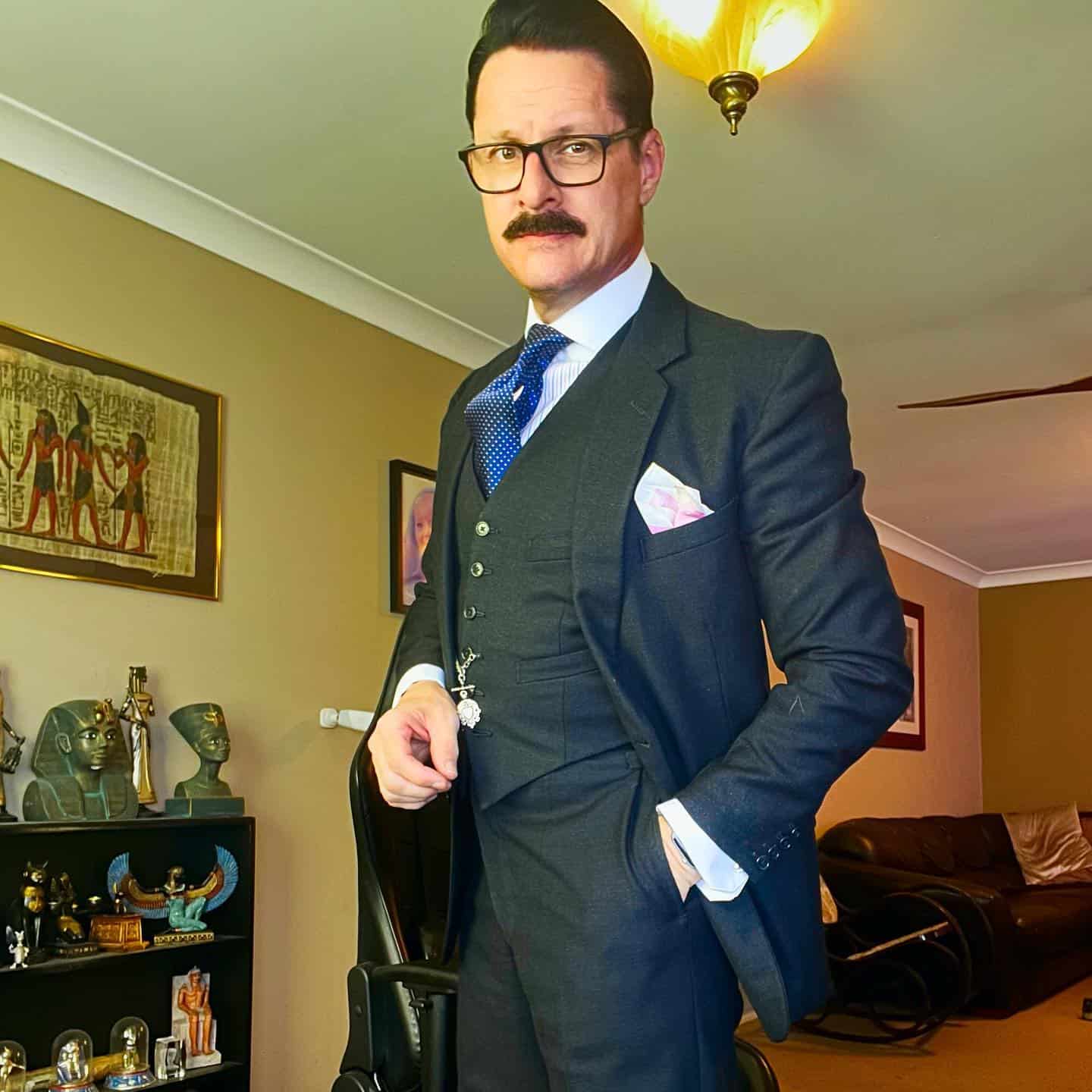
Incorporating 1960s menâs fashion into todayâs wardrobe can add a touch of classic sophistication and retro flair. A well-tailored Mod suit, for example, works perfectly for formal occasions, offering a sleek silhouette with its narrow lapels and fitted design.
For a casual look, pairing a polo shirt with slim-fit chinos captures the preppy essence of early â60s casualwear, while Chelsea boots provide a timeless finish that nods to the eraâs Mod culture. Incorporating knitwear, like a fine wool turtleneck or a cable-knit sweater, can add texture and warmth, echoing the late â60sâ move towards comfort and versatility.
To embrace the countercultureâs influence, opt for statement pieces like a patterned shirt or a pair of classic bell-bottoms, but balance them with contemporary items to avoid looking like youâre wearing a costume. By selecting key pieces that reflect the 1960sâ diverse styles and integrating them with modern fashion, you can create a look that honors the past while remaining stylish and relevant today.
Final Verdict
The 1960s revolutionized menâs fashion, introducing a breadth of styles and influences that continue to resonate in todayâs wardrobe choices. From the sharp, tailored lines of early â60s suits to the eclectic, free-spirited looks of the decadeâs end, the era offered a template for self-expression and innovation that remains influential. The 1960s taught us the power of fashion as a form of personal and cultural expression, a lesson that continues to influence the way we dress and present ourselves in the world today.
FAQ
-
-
During the 1960s, men wore a range of styles from slim-fitting suits and skinny ties early in the decade to casual and colorful attire like bell-bottom jeans, patterned shirts, and turtlenecks by its end. The era saw a transition from conservative, tailored looks to more expressive and diverse fashion choices.
-
â60s attire includes a variety of looks, from the tailored Mod suits and Chelsea boots of the early 1960s to the psychedelic prints, bell-bottom trousers, and denim of the late â60s, reflecting the decadeâs shift towards more casual, individualistic styles.
-
Guys in the â60s wore a range of shoes, including polished Oxford shoes, loafers, Chelsea boots, desert boots, and by the late â60s, sneakers and sandals as casual wear became more popular.
-
People wore t-shirts in the â60s, especially towards the latter part of the decade, as casual and comfortable clothing became more popular, often featuring band logos, tie-dye patterns, or plain designs.
-
While not called âskinny jeansâ at the time, men did wear slim-fitting trousers and jeans, particularly influenced by the Mod fashion of the mid-1960s, which favored tighter, more tailored fits.
-

